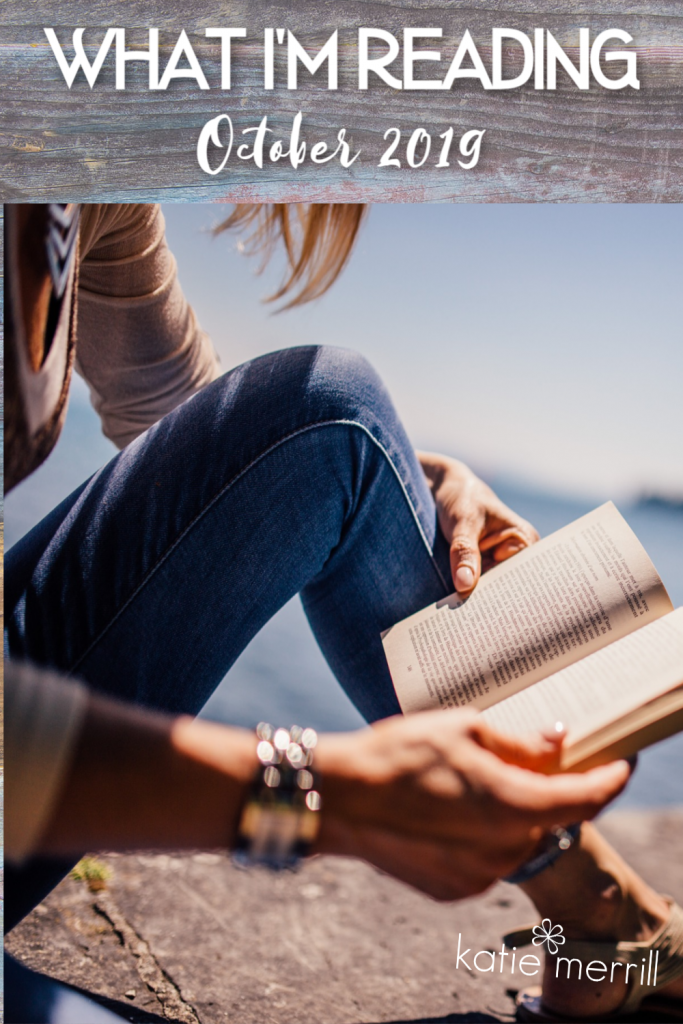This post may contain affiliate links, which means if you make a purchase from one of these links I will get a commission.
I read a kind of a hodge-podge of books. There’s not really any rhyme or reason. It’s recommendations from friends, bloggers, or what’s new at the library. I enjoy fiction, but it’s difficult for me to find fiction that stirs me enough to read much anymore. I love non-fiction, personal development especially because I am always trying to improve myself.
I don’t know if my list of books is of interest to anyone but me, but if you’re so inclined, read on! I have linked each of these books to Amazon for purchase, but many of these books I have read from my local library, so check there first.
How to Raise an Adult by Julie Lythcott-Haims

A provocative manifesto that exposes the harms of helicopter parenting and sets forth an alternate philosophy for raising preteens and teens to self-sufficient young adulthood
In How to Raise an Adult, Julie Lythcott-Haims draws on research, on conversations with admissions officers, educators, and employers, and on her own insights as a mother and as a student dean to highlight the ways in which overparenting harms children, their stressed-out parents, and society at large. While empathizing with the parental hopes and, especially, fears that lead to overhelping, Lythcott-Haims offers practical alternative strategies that underline the importance of allowing children to make their own mistakes and develop the resilience, resourcefulness, and inner determination necessary for success.
Relevant to parents of toddlers as well as of twentysomethings–and of special value to parents of teens–this book is a rallying cry for those who wish to ensure that the next generation can take charge of their own lives with competence and confidence.
Grown & Flown by Lisa Heffernan

The high school and college years: an extended roller coaster of academics, friends, first loves, first break-ups, driver’s ed, jobs, and everything in between. Kids are constantly changing and how we parent them must change, too. But how do we stay close as a family as our lives move apart?
Enter the co-founders of Grown and Flown, Lisa Heffernan and Mary Dell Harrington. In the midst of guiding their own kids through this transition, they launched what has become the largest website and online community for parents of fifteen to twenty-five year olds. Now they’ve compiled new takeaways and fresh insights from all that they’ve learned into this handy, must-have guide.
Grown and Flown is a one-stop resource for parenting teenagers, leading up to―and through―high school and those first years of independence. It covers everything from the monumental (how to let your kids go) to the mundane (how to shop for a dorm room). Organized by topic―such as academics, anxiety and mental health, college life―it features a combination of stories, advice from professionals, and practical sidebars.
Consider this your parenting lifeline: an easy-to-use manual that offers support and perspective. Grown and Flown is required reading for anyone looking to raise an adult with whom you have an enduring, profound connection.
Super Attractor by Gabrielle Bernstein

In Super Attractor, Gabrielle Bernstein lays out the essential steps for living in alignment with the Universe–more fully than you’ve ever done before. “I’ve always known that there is a nonphysical presence beyond my visible sight,” Gabby writes. “All my life I’ve intuitively tuned in to it and used it as a source for good. . . . What we call it is irrelevant. Connecting to it is imperative.” Super Attractor is a manifesto for making that connection and marrying your spiritual life with your day-to-day experience.
Semicolon: The Past, Present, and Future of a Misunderstood Mark by Cecelia Watson

The semicolon. Stephen King, Hemingway, Vonnegut, and Orwell detest it. Herman Melville, Henry James, and Rebecca Solnit love it. But why? When is it effective? Have we been misusing it? Should we even care?
In Semicolon, Cecelia Watson charts the rise and fall of this infamous punctuation mark, which for years was the trendiest one in the world of letters. But in the nineteenth century, as grammar books became all the rage, the rules of how we use language became both stricter and more confusing, with the semicolon a prime victim. Taking us on a breezy journey through a range of examples—from Milton’s manuscripts to Martin Luther King Jr.’s “Letters from Birmingham Jail” to Raymond Chandler’s The Big Sleep—Watson reveals how traditional grammar rules make us less successful at communicating with each other than we’d think. Even the most die-hard grammar fanatics would be better served by tossing the rule books and learning a better way to engage with language.
Through her rollicking biography of the semicolon, Watson writes a guide to grammar that explains why we don’t need guides at all, and refocuses our attention on the deepest, most primary value of language: true communication.
The Broken Girls by Simone St. James

Vermont, 1950. There’s a place for the girls whom no one wants—the troublemakers, the illegitimate, the too smart for their own good. It’s called Idlewild Hall, and local legend says the boarding school is haunted. Four roommates bond over their whispered fears, their budding friendship blossoming—until one of them mysteriously disappears….
Vermont, 2014. Twenty years ago, journalist Fiona Sheridan’s elder sister’s body was found in the overgrown fields near the ruins of Idlewild Hall. And although her sister’s boyfriend was tried and convicted of the murder, Fiona can’t stop revisiting the events, unable to shake the feeling that something was never right about the case.
When Fiona discovers that Idlewild Hall is being restored by an anonymous benefactor, she decides to write a story about it. But a shocking discovery during renovations links the loss of her sister to secrets that were meant to stay hidden in the past—and a voice that won’t be silenced….
How Not to Wear Black by Anna Murphy

Immerse yourself in this inspiring, realistic, and practical style book and you, too, will be able to throw together chic outfits effortlessly, have something you want to wear for every occasion, and create a wardrobe that, with occasional shopping forays, can last forever. Make fashion your friend!
Qoya: A Compass for Navigating an Embodied Life that is Wise, Wild and Free by Rochelle Schieck

QOYA: A Compass for Navigating an Embodied Life that is Wise, Wild and Free will help you go beyond illusion to remember the physical sensation of truth in your body as your North Star.
Rochelle Schieck draws on spiritual teachings from across the globe, personal pilgrimages from suburban Minnesota to the Madre de Dios River in Peru, and extensive studies of the divine feminine to craft a book that is part memoir, part social commentary, and part workbook, with over 35 detailed exercises that initiate your own life’s journey back to yourself.
The Future of Another Timeline by Annalee Newitz

1992: After a confrontation at a riot grrl concert, seventeen-year-old Beth finds herself in a car with her friend’s abusive boyfriend dead in the backseat, agreeing to help her friends hide the body. This murder sets Beth and her friends on a path of escalating violence and vengeance as they realize many other young women in the world need protecting too.
2022: Determined to use time travel to create a safer future, Tess has dedicated her life to visiting key moments in history and fighting for change. But rewriting the timeline isn’t as simple as editing one person or event. And just when Tess believes she’s found a way to make an edit that actually sticks, she encounters a group of dangerous travelers bent on stopping her at any cost.
Tess and Beth’s lives intertwine as war breaks out across the timeline–a war that threatens to destroy time travel and leave only a small group of elites with the power to shape the past, present, and future. Against the vast and intricate forces of history and humanity, is it possible for a single person’s actions to echo throughout the timeline?
Emotional Advantage: Embracing All Your Feelings to Create a Life You Love by Randy Taran

In recent years, there has been an overwhelming interest in the science of happiness and positive psychology, and many books on the subject. There is a good reason for this: it is a core, universal human drive. And while happiness has opened the door for many to move forward, there is a burgeoning curiosity about the full range of human emotions, all of which factor into the human experience. What do we do when life does not go as planned?
Neuroscience reveals that to understand and utilize any emotion, we need to “name it to tame it.” It turns out that even negative emotions have something to offer, if we know how to learn from them. Have you ever woken up in a fog of feelings and felt directionless? Or maybe it was hard to pinpoint exactly what you were feeling, but it wasn’t where you wanted to be? What if we could actually use our feelings as a pathway to guide us back to our inner compass? What if, like alchemists, we had the tools to transform our emotions to take charge of creating our very best life? What if we could comprehend how even the most troublesome emotions are sending messages to alert, protect, and fuel us forward?
Cozy: The Art of Arranging Yourself in the World by Isabel Gillies

When we talk about being cozy, most of us think of a favorite sweater or a steaming cup of tea on a rainy day. But to Isabel Gillies, coziness goes beyond mere objects. To be truly cozy, she argues, means learning to identify the innermost truth of yourself and carrying it into the world, no matter your environment.
Starting when she was young, Gillies has gradually learned the art and subtle beauty of creating a life where you feel safe, steadied, and at home in the world. From old family recipes and subway rides to jury duty and hospital stays, in Cozy Gillies shows readers that true ease stems not with throw pillows and a candle, but from opportunities to feel that we are part of something bigger than ourselves, and learn to make ourselves at home no matter where we are.
The Book of New Family Traditions: How to Create Great Rituals for Holidays and Every Day by Meg Cox

Quality family togetherness everyone wants it, but it seems increasingly harder to achieve. In a world run by cell phones, computers, and virtual networking, the comfort of human connection grows more important and rarer all the time. In a guide newly updated for the next generation, family expert Meg Cox offers a solution. Family rituals provide a sense of home and identity that kids and parents both need. From holidays and birthdays to bed times, meal times, pets, and even chores, The Book of New Family Traditions spotlights hundred of ways to bring the fun and ritual back to family life.
What are you reading this month? Let me know in the comments below, I’d love to hear from you or even find my next great read!


